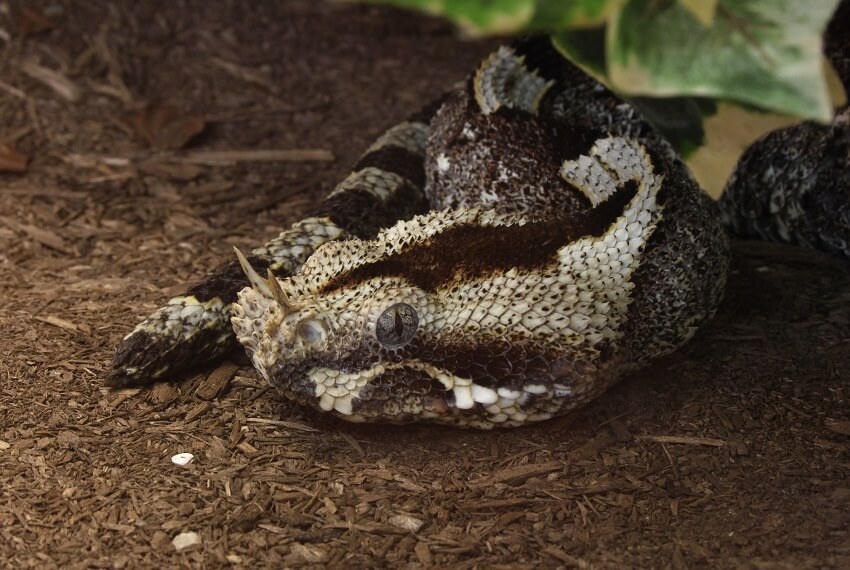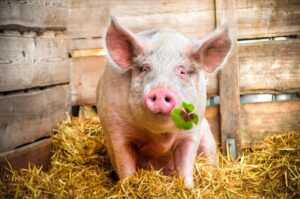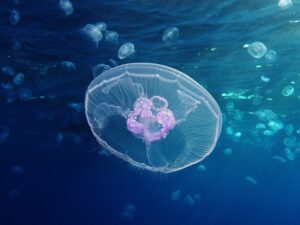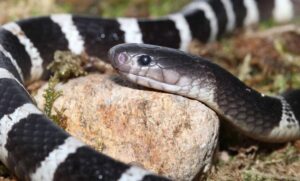This is a beautiful but extremely dangerous snake from the viper family. Bitis is a genus of venomous vipers found in Africa and the southern Arabian Peninsula. Among them is an exceptionally fearsome species in Africa, the Bitis nasicornis, also known as the rhinoceros viper, which is responsible for more human deaths than any other snake. If you’re interested in discovering The Most Dangerous Snake in Africa, let’s explore the details in the following article from KnowAllAnimals!
1. The Most Dangerous Snake in Africa: The “Death” Snake in Africa
Bitis Nasicornis, also known as the rhinoceros viper or river jack, is a very beautiful and vibrantly colored yet extremely venomous snake. When threatened, they often inflate and deflate their bodies while hissing loudly.
- Kingdom: Animalia
- Phylum: Chordata
- Class: Reptilia
- Order: Squamata
- Suborder: Serpentes
- Family: Viperidae
- Genus: Bitis
- Species: B. nasicornis
They get the name “rhinoceros viper” from the pair of horns (modified scales) on their nose that resemble a rhinoceros’s horn. They typically live in the rainforests and swamps of West and Central Africa and are a source of fear for the local people.
If you look closely at their head, you will also see a triangular black pattern that resembles the Grim Reaper (see image above), which makes this viper species even more terrifying.
This snake can grow up to 70 to 90 cm long, with some even reaching 1.3 meters. Like other vipers, this species has triangular, rectangular, or diamond-shaped patterns running along its body.

2. How to Identify the Most Dangerous Snake in Africa?
This snake’s appearance is quite similar to its “cousin,” the Gaboon viper, but its colors are much more vibrant and beautiful, with prominent shades of red, yellow, green, blue, and black.
The Bitis nasicornis is a nocturnal and primarily terrestrial snake, though it can also be found in aquatic environments or high up in trees. Although it moves slowly, it strikes its prey with lightning speed.
This venomous snake injects a lethal dose of venom to paralyze its prey before swallowing it whole. It is incredibly patient when ambushing its meal and acts with swift efficiency when it attacks. Its primary diet consists of rodents, frogs, and fish.
The patterns and skin colors help the snake camouflage itself by hiding under fallen leaves or on the forest floor, making them very difficult for us to spot. Their bodies are very muscular and robust, especially when they inflate to threaten a predator.
Their venom can cause internal bleeding, tissue destruction, and attacks the circulatory and nervous systems, leading to a quick death for the victim.

3. FAQs
1. Where is the “Death” Snake Bitis nasicornis from and where is it distributed?
The Bitis nasicornis (or Rhinoceros viper) lives primarily in the rainforests and swamps of West and Central Africa.
2. Why is it called the “Death” snake or the snake with a “death” symbol on its head?
Because the snake’s head has a triangular black pattern that resembles a skull or a death symbol, combined with the small “horns” on its nose, creating a terrifying and distinctive image.
3. What are the behavioral characteristics and danger level of Bitis nasicornis?
+ This snake is mainly active at night and lives on land but is sometimes found in trees or water.
+ When threatened, it inflates its body, makes a loud hissing sound, and attacks very quickly.
+ Its venom can cause internal bleeding, tissue destruction, and affect the nervous and circulatory systems, potentially leading to the death of the victim if not treated in time.
The Most Dangerous Snake in Africa – Bitis nasicornis is not only notable for its bizarre appearance with the “death symbol” on its head, but also extremely dangerous due to its rapid strike and deadly venom. Learning about its habits, habitat, and identifying features not only provides fascinating knowledge about the wild but also helps people know how to be cautious if they ever come face to face with this terrifying snake.



